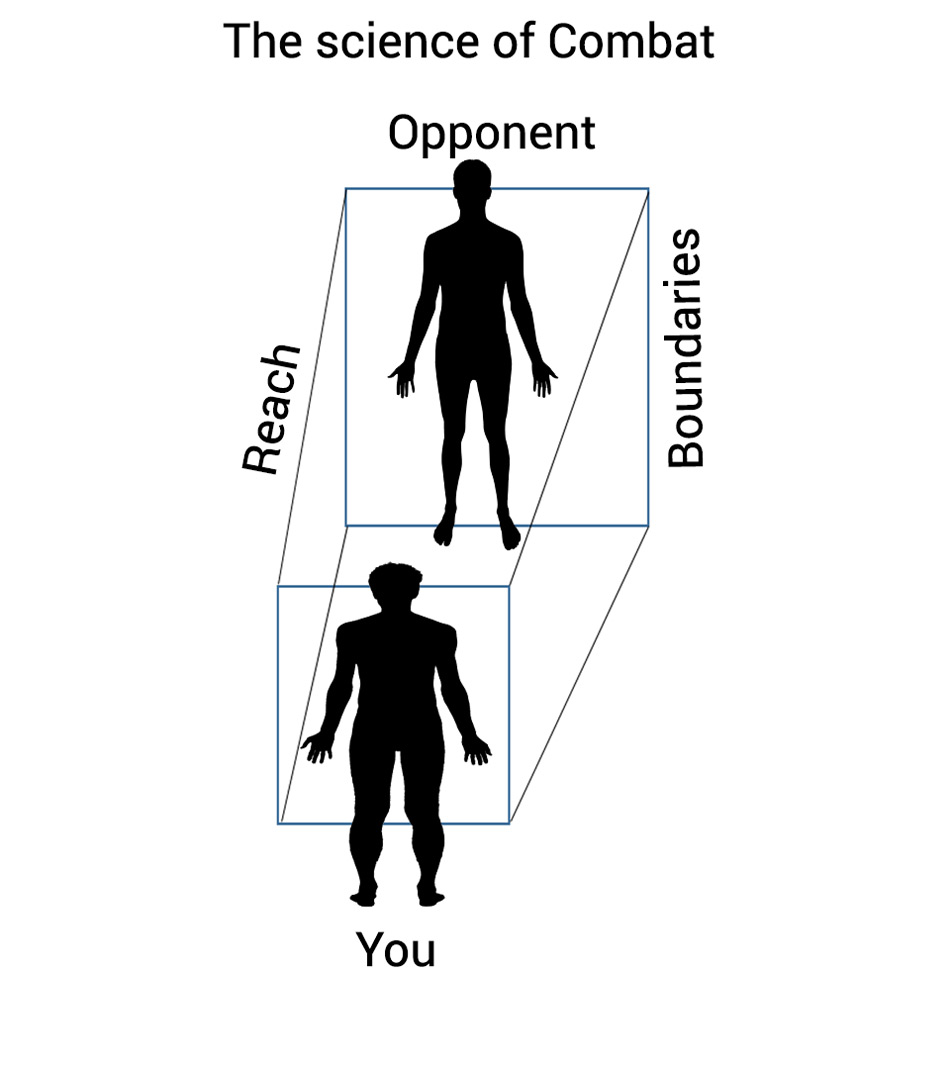There is a hidden element to percussion weapons’ training that only becomes apparent the moment you start using them to train. What powers them is the human body. This means that things like wrist flexibility, muscle strength, core stability, tendon strength, dexterity, balance, body positioning and coordination, all play a role in the final outcome.
The physical element is closely linked to the mental aspect. In order for us to move our body, for example, we have a precise 3D mental model of the world around us and the way our body fits in it. We know where to place our feet in order to take half a step (as opposed to a full one), how to hold our trunk and arms so we do not fall over when we kick and just how far our arms and legs can reach when we extend them.
The moment a weapon enters the picture the mental model needs to change and that’s where things get interesting. Suddenly we need to know where the effective range starts and stops, what are the likely paths of attack? Which are the areas for defense? How can we accelerate the weapon without overbalancing or hurting ourselves, where does the power for specific moves come from and how can we maximize it?
These are questions that really come from practice, but every weapon introduces three distinct elements in this picture:
- Its weight - how heavy or light it is will also affect how we move and, for our purposes, change what a workout does for us.
- Its form - it is intended to be an edged weapon or a blunt instrument? Is it really long or just a little longer than our arms? Is it intended to be used with one arm or two?
- Its function – Is it curved or straight? Does it have an attacking side or can any part of it can be used in any way?
These three change everything. Suddenly the way our body has to move becomes different because we are not using our muscles to power ourselves, we are using our muscles and, in many cases our entire body, to power a weapon. From a physical fitness point of view this begins to hyperload specific muscle groups, increasing their strength, as they adapt.
From a mental point of view our minds learn to remodel the world and adapt. To illustrate this change a little better consider that in any kind of combat situation with an imaginary opponent the space we are in becomes a square split into four quadrants and segmented by four, interesting lines.

Squares mark defense areas. Lines mark attack paths. We always need as large a square as possible (to allow us time to defend) and as straight an attack path as possible (to get our strike on target fast). So, all personal combat (and that includes unarmed combat and martial arts) becomes a case of defining the right kind of defense square that works for us so we can defend the attack paths that are available to our opponent, and vice versa.
Training your Mind
Nothing happens in a vacuum. Even if we just jump up and down on the spot it requires our brain to be able to factor in muscle strength and leap height to prepare our muscles to absorb the impact of our body on landing, body positioning and arms and leg balance so we don’t fall over and where we are in relation to all the breakable things around us so we don’t have to go on shopping sprees after every time we do half jacks at home.
How does this relate to weapons training? The four quadrants of the body with defense areas split into squares now becomes a three dimensional cube with one side being us and the other our (imaginary in this case) opponent.
The lines that join us now extend beyond us, to our intended target. They are defined by reach (how far) and the boundaries of his defense against our attacks.

Tangible Benefits
Training with weapons is hard because we have to learn to mentally use them the same way as we do our own body. The benefits however are considerable:
- Increased strength – handling a weapon, even a light one, increases the load on our muscles and joints and helps them get stronger.
- Greater speed – speed is a combination of core stability, tendon strength, body positioning and muscle fiber makeup. A weapon helps us build up or improve on all of this.
- Better balance – the speed at which a weapon moves and the need to use the body to power it forces us to build up a better balance and develop greater awareness of body positioning.
- A stronger core – weapons’ handling forces the two halves of the body (lower and upper) to work in tight coordination. This then helps build core strength as the different muscle groups begin to move smoothly together.
- Better coordination - because handling a weapon adds to the overall amount of force being applied to the body, it requires better hand/eye coordination.
- Improved stamina – weapons training is not just about strength, it requires a sustained number of movements carried out convincingly. Sustaining that requires muscles that can perform without failing for a longer period of time than if they were performing without a weapon.
- Better mental agility – the mind is the greatest weapon. Having the ability to create complex mental models of what we do and how and then adjust them on the fly requires the kind of mental computing power few people can manage. Weapons’ training becomes an intense mental workout the moment you pick up a weapon and start to wave it around.
Now that you know all this you just need to dive into our weapons’ training programs.










